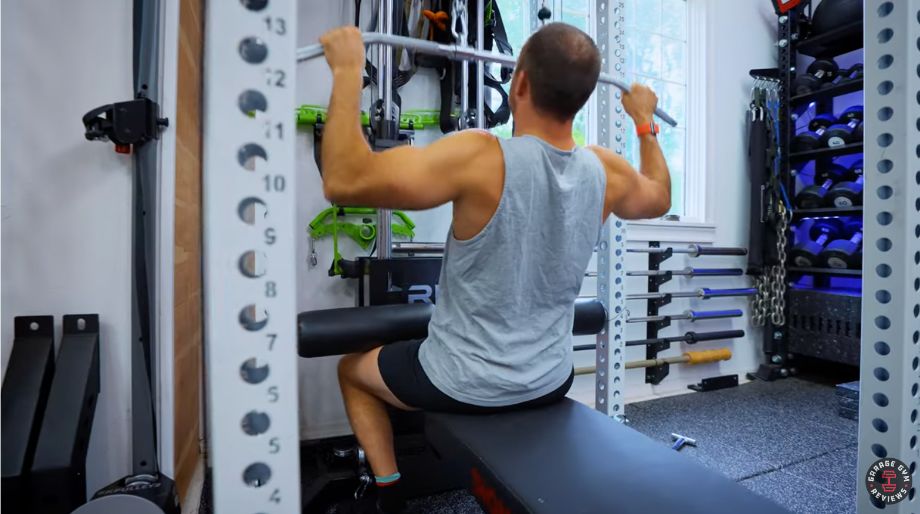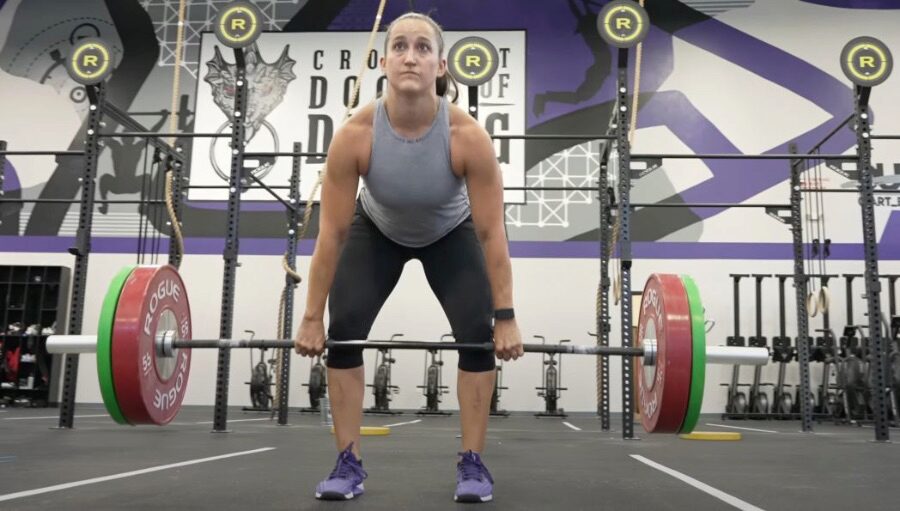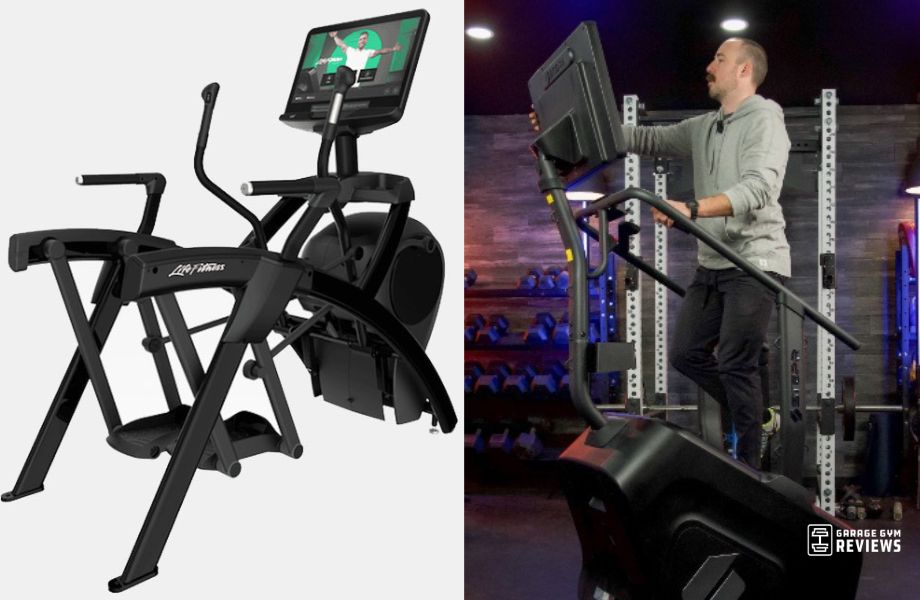As a certified personal trainer, I have observed, over the course of a decade, that three of the most popular exercises are the barbell bench press, standing cable exercises, and the lat pulldown exercise. If you go to the gym at peak gym times, you will often find lifters waiting for the above machines.
The lat pulldown exercise is so popular because it can give you wings. No, not wings like Red Bull. The pulldown targets back muscles, specifically the latissimus dorsi muscles (lats), which look like wings when flexed. Also, the pulldown is easier to do than other vertical pulling exercises, like the chin-up or pull-up. It’s a versatile exercise that you can easily modify if you’re a beginner, and progress it as you get stronger.
How To Do The Lat Pulldown Exercise
Here’s how to do lat pulldowns with proper form.
- Grip the lat pulldown attachment with either an overhand grip, underhand grip, or mixed grip at your preferred grip width (wide, narrow, or neutral grip)
- Sit down and secure your knees underneath the pad if there is one.
- Pull down the bar until it is underneath your chin, keeping your shoulders and chest up.
- Raise the bar slowly to the starting position, reset, and repeat for desired repetitions.
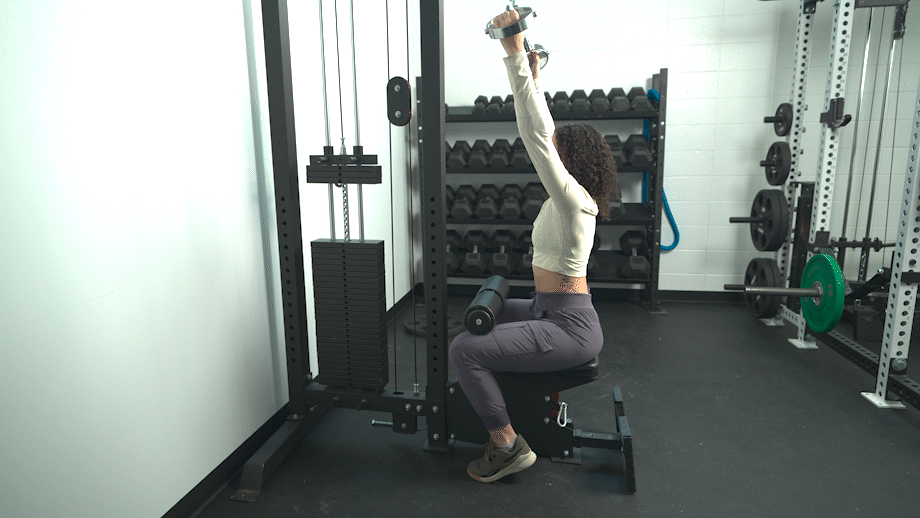
Trainer Tips for Form
The lat-pulldown exercise is easier than the chin-up and pull-up because it requires less strength. But just because it is easier doesn’t mean you shouldn’t watch your form. Here are a few trainer tips to get the best out of this exercise.
RELATED: Lat Pulldown Vs Pull-Up
Proper Set-Up
When you approach one of the best lat pulldown machines, ensure the knee pad is at the correct height for your limb length. Having your knees at a 90-degree angle ensures a better, more comfortable pull.
Choose Your Grip
With the regular lat-pulldown bar attachment, you can go wide grip (harder) or close grip (easier), as well as overhand grip (harder), or underhand grip (easier). Changing your grips and grip width is advisable for better muscular development of the lats and upper back.
RELATED: Best Grip Strength Exercises
Limit Momentum
The best way to grow and strengthen a muscle is to feel it working. When you’re using other parts of your body to perform the lat pulldown exercise, you will lose some of the benefits of this exercise. In other words, try not to use any body english when pulling down the bar, such as leaning too far back to create momentum.
Choose a weight you can control as you pull down and when you raise the bar back to the starting position.
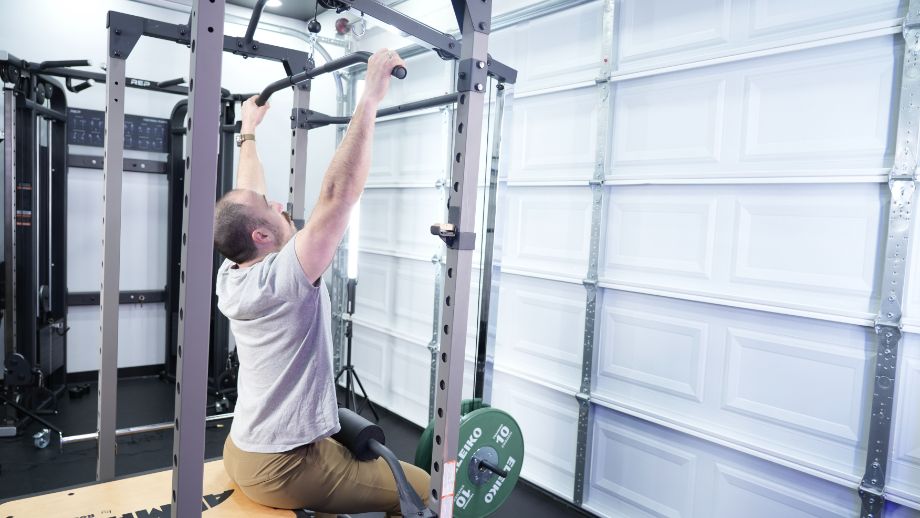
Lat Pulldown Benefits
The lat pulldown is not a technical exercise like a barbell deadlift or squat, and it is easily regressed or progressed by changing the weight on the weight stack. Here are a few more vital benefits of the lat pulldown exercise.
It Will Give You Wings
The lat pulldown is more straightforward than other vertical pulling exercises like a pull-up, and it targets the widest muscle on the upper body, the lats. These two reasons allow you to do more reps with the lat pulldown for more muscle-building benefits.
Constant Tension
The beauty of the best cable machines with a lat pulldown is that the resistance is constant throughout the range of motion. With bodyweight and dumbbell exercises, there are points in the range of motion that are easier or harder. But with the cable pulley weight constant, this leads to a greater time under tension, which has been shown to stimulate more muscle growth1.
Easily Progressed
The beauty of the lat pulldown is that it is easier to perform than the pull-up and chin-up, making it beginner friendly because less strength is required. But it is also easily progressed by changing your grip, changing grip width, increasing the weight, and changing the lat pulldown attachment.
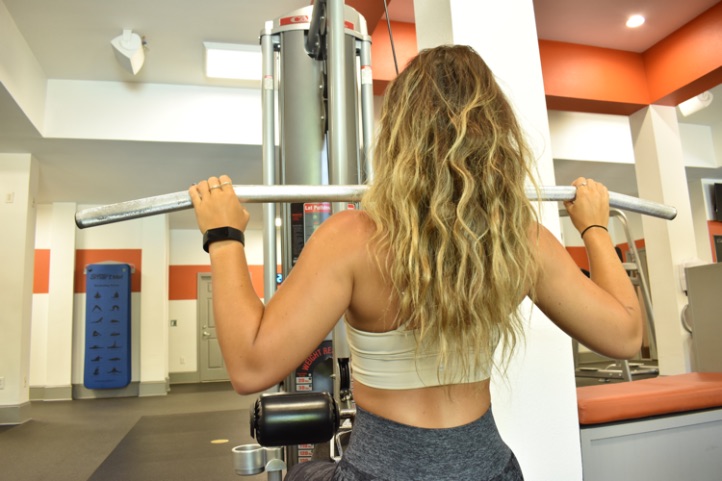
Common Mistakes With the Lat Pulldown Exercise
Mistakes are how we learn, but they can best be avoided when you know better. Here are two big mistakes that will stop you from getting the most out of this classic pulling exercise.
Body English
Exercisers who try to push the envelope with the lat pulldown will swing their torso back to pull down the weight and will rise from their chair during the eccentric. This lack of control invites injury, looks silly, and you will lose the benefit discussed above.
Watch Your Range Of Motion
Tasha Wolf Whelan, head coach and manager at PRO Strength & Conditioning, sees exercisers artificially expanding their range of motion, leading to problems.
“Often, lifters pull down too far, losing their shoulder position (too much anterior humoral glide), causing loss of lat engagement and increased mileage on the shoulder joint. Additionally, lifters mistakenly cut the range of motion short, not allowing the lats to extend to its fully lengthened state, which can limit shoulder function and mobility while reducing muscle-building,” explains Whelan.
RELATED: Build Your Own DIY Lat Pulldown
Lat Pulldown Variations
The lat pulldown is a versatile exercise that can be performed in different ways to engage the lats differently. Here are four such variations.
Reverse-Grip Lat Pulldown
Why do It: The reverse grip lat pulldown uses an underhanded(supinated, palms facing toward you) grip that targets the biceps and lower lats more and is also a stronger grip, leading to performing more reps.
How to do it:
- Grip the lat pulldown bar with an underhand grip with hands shoulder-width apart.
- Sit down, placing your knees underneath the pad, ensuring the knees are at a 90-degree angle.
- With arms extended, pull down the bar until it reaches your upper chest.
- Slowly raise to the starting position and reset and repeat for reps.
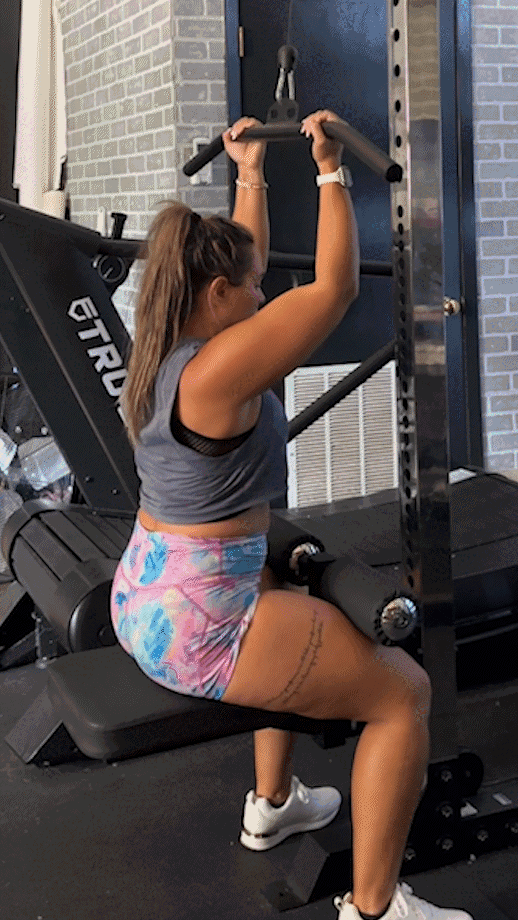
Single-Arm Lat Pulldown
Why do It: Training each arm unilaterally allows you to identify and help correct pulling imbalances between sides, leading to better muscular development.
How to do it:
- Attach a D-Handle to the lat pulldown machine (though you can also use a rope attachment).
- Grip with an underhand or overhand grip and sit down with your knees underneath the pad.
- With the elbow extended, flex it and pull down the D handle until it is in front of your anterior deltoid.
- Slowly return to the starting position and reset and repeat for reps.
- Then switch sides and repeat.
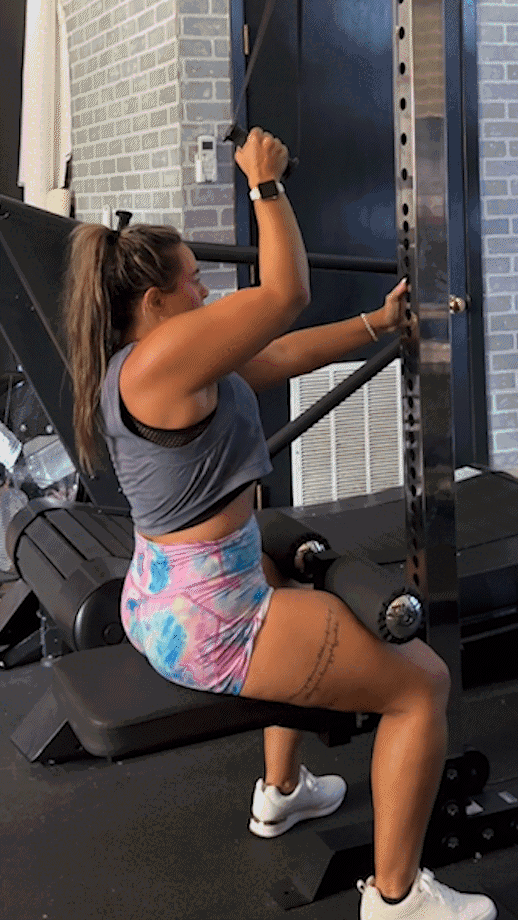
Straight-Arm Lat Pulldown
Why do It: The straight-arm lat pulldown doesn’t involve the biceps and is as close to an isolation exercise for the lats as there is.
RELATED: Best Biceps Workout
How to do it:
- Grip the lat pulldown bar standing with an overhand shoulder-width grip.
- Step back and straighten your arms, keep your chest up, and pull your shoulders down.
- Hinge slightly and lean your torso forward to a 35 to 45-degree angle, feeling a stretch in your lats.
- Then pull the bar down toward your quads, focusing on pulling your shoulder blades down and back.
- Slowly return to the starting position and reset and repeat for reps.
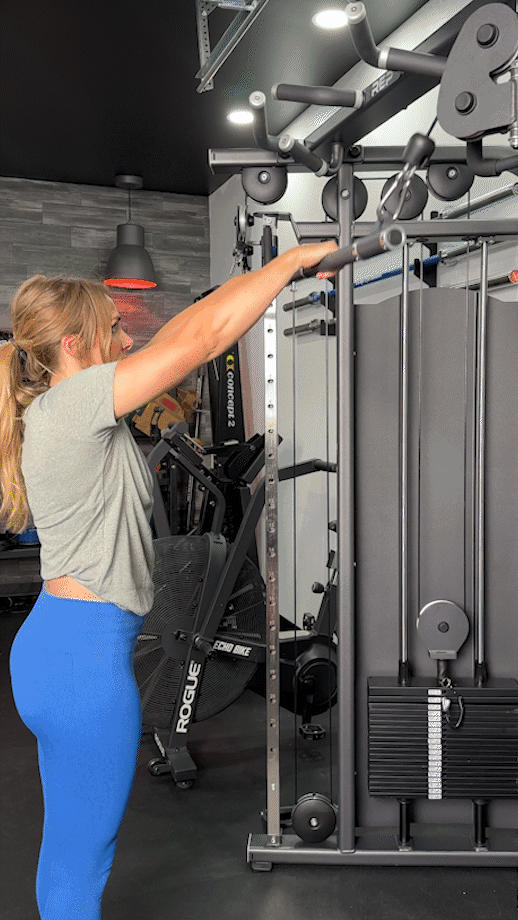
Behind-the-Neck Pulldown
Why do It: The behind-the-neck lat pulldown might not be as effective as the front version, but if you need to strengthen this position for the Olympic lifts, this is an ideal variation.
How to do it:
- With your back to the lat-pulldown machine, take a wider than then shoulder-width grip, similar to a wide-grip lat pulldown.
- Sit down on the pad with your knees bent at 90 degrees and your arms straight.
- Pull down the bar behind your head, keeping your shoulders down and chest up.
- Slowly raise to the starting position and reset and repeat for desired reps.
Note: Because your knees are not underneath the pad, you will likely use less weight with this variation.
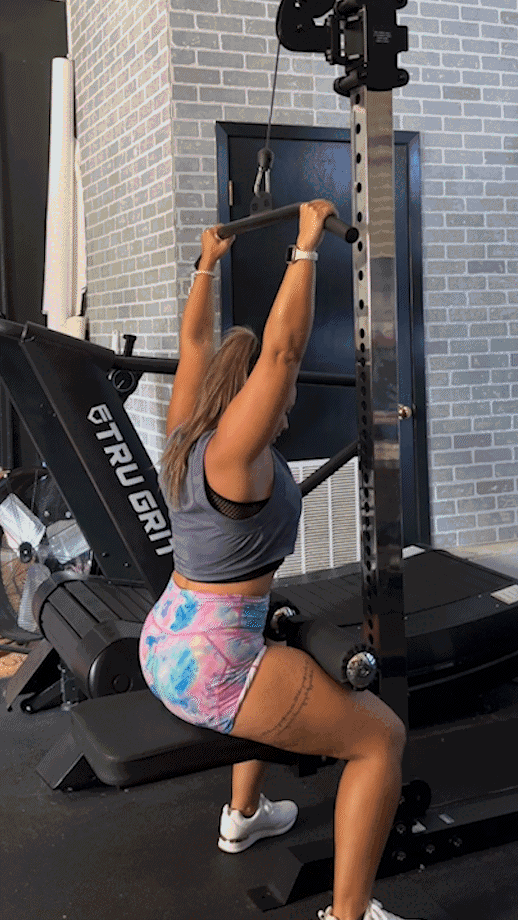
Pull-Down Exercise FAQs
What does the pulldown exercise work?
The muscles the pulldown exercise works are the forearms, biceps, triceps (long head), rear delts, rhomboids, trapezius, and latissimus dorsi.
What is the difference between pull-up and pulldown exercises?
The pull-up and the pulldown work similar muscle groups, but the most significant difference is with the pull-up, you’re pulling your entire body weight up, but with the pulldown, you are pulling the pulley weight stack down.
Is the pulldown exercise enough for the back?
Although pulldowns are a great exercise for your bodybuilding back workout, you need a variety of back exercises to develop the lats, upper and lower back fully. Horizontal rowing exercises like resistance band pull-aparts, dumbbell rows, barbell bent-over rows, single-arm cable rows, and even reverse fly’s are needed to develop your back strength fully.
How many pulldowns should I do?
How many pulldowns you should do depends on your goals. It’s best to work within reps of eight to 15 to build muscle, using a weight that induces temporary muscle failure. Working between four to six reps for three to five sets works well if the goal is strength.
References
- Burd NA, Andrews RJ, West DW, et al. Muscle time under tension during resistance exercise stimulates differential muscle protein sub-fractional synthetic responses in men. J Physiol. 2012;590(2):351-362. doi:10.1113/jphysiol.2011.221200


